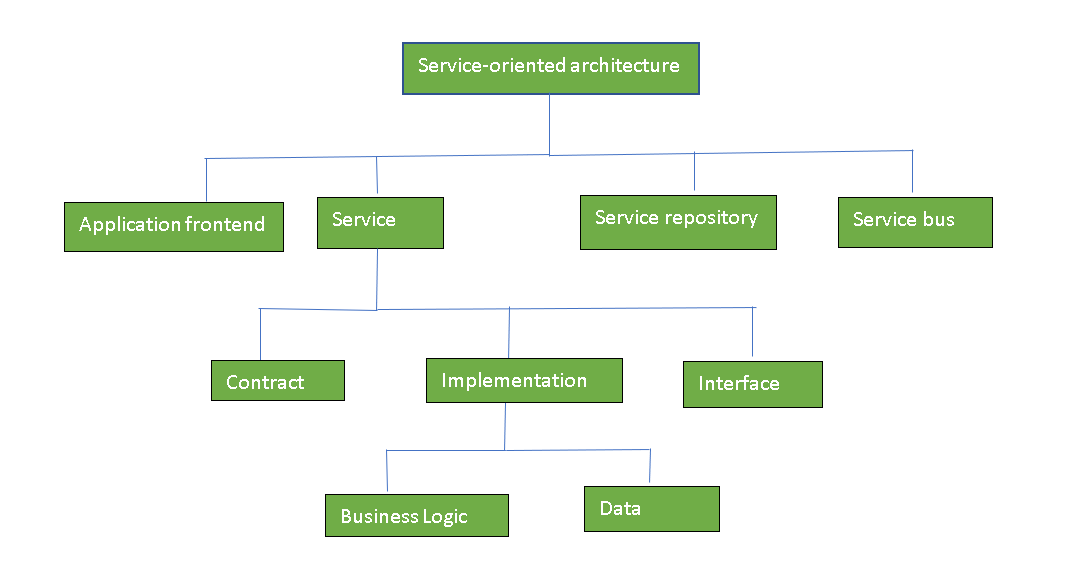Marketing Manager | Posted on | Education
Implementing Service-oriented Architecture with .NET Development
0
130 Views
Are you a developer looking to improve your skills or a business owner trying to optimize your software architecture? Have you heard about Service-oriented Architecture (SOA) with .NET Development?
SOA is an approach to software development that breaks down applications into modular services, making them more flexible and scalable. And the best part? It allows for easy reusability, resulting in improved performance and cost-effectiveness.
Over 90% of businesses have adopted SOA as a critical component of their software development strategy. And for a good reason! Businesses that have implemented SOA have reported a 30% reduction in development time and a 25% increase in productivity. That's a big deal!
You're in luck if you want to implement SOA with .NET Development! In this blog post, we'll take a deep dive into the benefits of SOA, the critical components of an SOA system, and best practices for implementation. By following these guidelines, you can optimize your software architecture and stay ahead of the competition.
So, what are you waiting for? Let's get started!
What is Service-oriented Architecture (SOA)?
The SOA software development method strongly emphasizes using modular services that can be quickly combined and reused to produce flexible and scalable applications. In an SOA system, services are loosely coupled, meaning they can be developed and deployed independently and communicate with each other through standardized protocols and interfaces. In .net development services, tools such as WCF (Windows Communication Foundation) and ASP.NET Web API make the implementation possible.

Implementing SOA with .NET Development
Designing the service interfaces
Creating interfaces for the services utilized in the application is the first step in implementing SOA with .NET Development. This involves defining each service's inputs, outputs, and behaviors, as well as the protocols and interfaces used for communication.
Creating the service providers and service consumers
Once the service interfaces have been designed, the next step is to make the service providers and service consumers. Service providers are responsible for implementing the services, while service consumers use the services to perform specific tasks.
Registering and discovering services with the Service Registry
To enable service discovery and ensure that service consumers can easily access services, businesses must register their services with a Service Registry. The Service Registry acts as a directory of available services and their locations, allowing service consumers to find and use the services they need easily.
Using the Service Broker to manage interactions between services
Finally, companies can use a Service Broker to control how services interact. The Service Broker manages messages sent and received correctly, handles errors or failures, and handles communication between various services.
Tools for Implementing SOA with .NET Development
A professional software development services company uses multiple tools to implement SOA with .NET Development. These include the following:
WCF (Windows Communication Foundation)
WCF is a framework for building service-oriented applications that communicate with each other over the network. It provides a unified programming model for building distributed systems using a variety of communication protocols, such as HTTP, TCP, and named pipes. WCF is particularly well-suited for making interoperable and secure services that various clients can access, including web applications, desktop applications, and mobile devices.
Web API
Web API is a framework for building RESTful services using .NET Development. It enables developers to quickly develop and consume HTTP services accessed from various platforms and devices, including web browsers, mobile apps, and IoT devices. Web API is handy for building lightweight and scalable services requiring a simple, flexible, standardized interface.
Azure Service Fabric
Azure Service Fabric is a distributed systems platform that provides a rich set of tools and services for building and deploying microservices-based applications. It provides a flexible and scalable platform for hosting and managing services, including automatic scaling, health monitoring, and rolling upgrades. Azure Service Fabric is well-suited for building complex and mission-critical applications requiring high availability, fault tolerance, and scalability.
Conclusion
Service-oriented Architecture (SOA) with .NET Development provides a powerful way to build flexible, scalable, cost-effective software architectures that adapt to changing business requirements. By breaking down complex applications into more minor, manageable services, businesses can improve their agility and responsiveness while reducing development costs and improving overall system performance.
By embracing SOA and adopting the right tools and strategies for building distributed systems, businesses can create a more flexible, scalable, and future-proof software architecture to help them succeed in the fast-paced and ever-changing world of modern software development.
